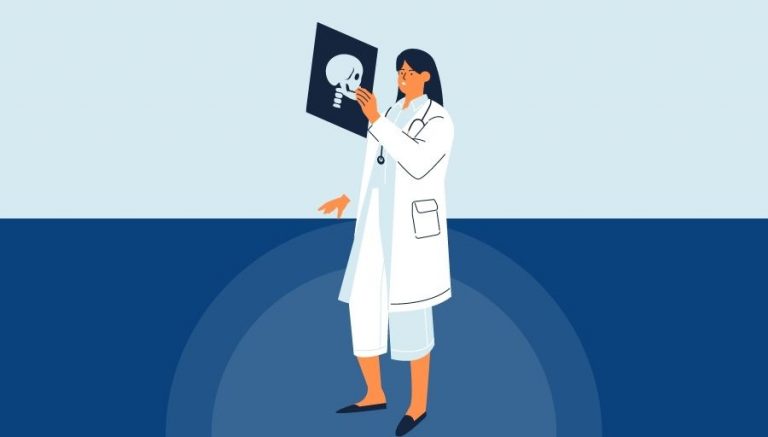How To Use CPT Code 94002
CPT 94002 describes the initiation of pressure or volume preset ventilators for assisted or controlled breathing for a hospital inpatient or observation patient on the first day of treatment. This article will cover the description, procedure, qualifying circumstances, appropriate usage, documentation requirements, billing guidelines, historical information, similar codes and billing examples.
1. What is CPT Code 94002?
CPT 94002 can be used to describe the initial setting of ventilator parameters for a patient who cannot breathe on their own. This code is used for hospital inpatients or observation patients on the first day of treatment. In assisted or controlled breathing, a ventilator delivers preset breaths in coordination with the patient’s respiratory effort. The provider examines the patient and determines the need for ventilation. The provider then sets the ventilator settings to assist or breathe for the patient, depending on their condition. Sedation may be used to facilitate optimal ventilation and prevent the patient from fighting the ventilator tube. During weaning, the provider gradually changes the modes of mechanical ventilation to allow the patient to resume breathing on their own.
2. Official Description
The official description of CPT code 94002 is: ‘Ventilation assist and management, initiation of pressure or volume preset ventilators for assisted or controlled breathing; hospital inpatient/observation, initial day.’
3. Procedure
- The provider examines the patient and determines the need for ventilator assistance.
- The provider sets the ventilator parameters to assist or breathe for the patient based on their condition.
- Sedation may be used to facilitate optimal ventilation and prevent the patient from fighting the ventilator tube.
- The provider gradually changes the modes of mechanical ventilation during weaning to allow the patient to resume breathing on their own.
4. Qualifying circumstances
CPT 94002 is used for patients who require ventilator assistance and cannot breathe on their own. This code is specifically for hospital inpatients or observation patients on the first day of treatment. The provider must examine the patient and determine the need for ventilation. Sedation may be used to facilitate optimal ventilation and prevent the patient from fighting the ventilator tube.
5. When to use CPT code 94002
CPT code 94002 should be used when a patient requires the initiation of pressure or volume preset ventilators for assisted or controlled breathing. This code is specifically for hospital inpatients or observation patients on the first day of treatment. It is important to note that a face-to-face encounter between the provider and the patient is required for reporting this procedure.
6. Documentation requirements
To support a claim for CPT 94002, the provider must document the following information:
- Reason for ventilator assistance
- Specific ventilator parameters set for the patient
- Use of sedation, if applicable
- Details of the weaning process, if applicable
- Time spent providing the service
7. Billing guidelines
When billing for CPT 94002, ensure that the service is performed for a hospital inpatient or observation patient on the first day of treatment. A face-to-face encounter between the provider and the patient is required. There is no specific time requirement for reporting this procedure, but the provider should document the time spent providing the service. It is important to note that CPT 94002 should not be reported if CPT codes 94003 to 94005 have already been performed in the previous seven days.
8. Historical information
CPT 94002 was added to the Current Procedural Terminology system on January 1, 2007. There have been no updates to the code since its addition.
9. Examples
- A patient in the hospital experiences acute respiratory distress and requires ventilator assistance. The provider sets the ventilator parameters and manages the ventilation on the first day of treatment.
- An observation patient is unable to breathe on their own and requires the initiation of pressure preset ventilators. The provider performs the necessary procedures to assist the patient’s breathing on the first day of treatment.
- A hospital inpatient requires controlled breathing and the provider sets the ventilator parameters accordingly. The provider manages the ventilation for the patient on the first day of treatment.
- An observation patient experiences apneic spells and needs assistance with breathing. The provider initiates the use of volume preset ventilators and manages the ventilation on the first day of treatment.
- A hospital inpatient has reduced oxygen readings and requires assisted breathing. The provider sets the ventilator parameters and manages the ventilation for the patient on the first day of treatment.
- An observation patient is unable to breathe on their own and requires the initiation of pressure preset ventilators. The provider performs the necessary procedures to assist the patient’s breathing on the first day of treatment.
- A patient in the hospital experiences acute respiratory distress and requires ventilator assistance. The provider sets the ventilator parameters and manages the ventilation on the first day of treatment.
- An observation patient is unable to breathe on their own and requires the initiation of pressure preset ventilators. The provider performs the necessary procedures to assist the patient’s breathing on the first day of treatment.
- A hospital inpatient requires controlled breathing and the provider sets the ventilator parameters accordingly. The provider manages the ventilation for the patient on the first day of treatment.
- An observation patient experiences apneic spells and needs assistance with breathing. The provider initiates the use of volume preset ventilators and manages the ventilation on the first day of treatment.



